Study on the Superhydrophobic Properties of an Epoxy Resin-Hydrogenated Silicone Oil Bulk Material Prepared by Sol-Gel Methods
Abstract
1. Introduction
2. Experimental Sections
2.1. Experimental Reagents
2.2. Preparation of Superhydrophobic Material
2.3. Material Characterization
3. Results and Discussion
3.1. Analysis of Chemical Bond Characteristics
3.2. Hydrophobicity Analysis
3.3. Thermal Properties
3.4. Repairability
4. Conclusions
Author Contributions
Funding
Institutional Review Board Statement
Informed Consent Statement
Data Availability Statement
Conflicts of Interest
References
- Drelich, J.; Marmur, A. Physics and applications of superhydrophobic and superhydrophilic surfaces and coatings. Surf. Innov. 2014, 2, 211–227. [Google Scholar] [CrossRef]
- Ma, M.L.; Mao, Y.; Gupta, M.; Gleason, K.K.; Rutledge, G.C. Superhydrophobic fabrics produced by electrospinning and chemical vapor deposition. Macromolecules 2005, 38, 9742–9748. [Google Scholar] [CrossRef]
- Ma, W.W.; Zhou, Z.P.; Li, P. Preparation and fluid drag reduction properties of superhydrophobic paper-based films comprising carbon nanotubes and fluoropolymers. Sci. Eng. Compos. Mater. 2017, 24, 177–184. [Google Scholar] [CrossRef]
- Zhu, M.; Tang, W.C.; Huang, L.Y.; Zhang, D.W.; Du, C.W.; Yu, G.H.; Chen, M.; Chowwanonthapunya, T. Preparation of superhydrophobic film on Ti substrate and its anticorrosion property. Materials 2017, 10, 628. [Google Scholar] [CrossRef]
- She, Z.X.; Li, Q.; Wang, Z.W.; Li, L.Q.; Chen, F.N.; Zhou, J.C. Researching the fabrication of anticorrosion superhydrophobic surface on magnesium alloy and its mechanical stability and durability. Chem. Eng. J. 2013, 228, 415–424. [Google Scholar] [CrossRef]
- Chen, Z.; Hao, L.M.; An-qi Chen, A.Q.; Song, Q.J.; Chen, C.L. A rapid one-step process for fabrication of superhydrophobic surface by electrodeposition method. Electrochim. Acta 2012, 59, 168–171. [Google Scholar] [CrossRef]
- Chen, Z.; Hao, L.M.; Chen, A.Q.; Song, Q.J.; Chen, C.L. Electrodeposition fabrication of Co-based superhydrophobic powder coatings in non-aqueous electrolyte. Appl. Phys. A 2013, 111, 581–585. [Google Scholar] [CrossRef]
- Kiyoharu, T.; Junichi, M.; Minami, T. Formation of superhydrophobic-super hydrophilic pattern on flowerlike alumina thin film by the sol-gel method. J. Sol-G El Sci. Technol. 2000, 19, 211–214. [Google Scholar]
- Shang, H.M.; Wang, Y.; Limmer, S.J.; Chou, T.P.; Takahashi, K.; Cao, G.Z. Optically transparent superhydrophobic silica-based films. Thin Solid Film. 2004, 472, 37–43. [Google Scholar] [CrossRef]
- Latthe, S.S.; Sutar, R.S.; Kodag, V.S.; Bhosale, A.K.; Kumar, A.M.; Kumar Sadasivuni, K.; Xing, R.M.; Liu, S.H. Self-cleaning superhydrophobic coatings: Potential industrial applications. Prog. Org. Coat. 2019, 128, 52–58. [Google Scholar] [CrossRef]
- Liu, X.H.; Han, J.; Wu, W.N.; Shi, Q.; Li, W.; Li, C.L. Highly luminescent glass films incorporating hydrophobic quantum dots prepared by layer-by-layer self-assembly method. Chem. Lett. 2016, 45, 10–12. [Google Scholar] [CrossRef]
- Liewchirakorn, P.; Suthisamphat, P.; Chinsirikul, W.; Aht-Ong, D. Low haze and antifog performance of 2-layer poly(lacticacid) based films. Key Eng. Mater. 2017, 751, 326–331. [Google Scholar] [CrossRef]
- Rastegari, A.; Akhavan, R. The common mechanism of turbulent skin-friction drag reduction with super-hydrophobic micro-grooves and riblets. J. Fluid Mech. 2018, 838, 68–104. [Google Scholar] [CrossRef]
- Santiago, A.; González, A.; Iruin, J.J.; Fernández-Berridi, M.J.; Irusta, L. Preparation of superhydrophobic silica nanoparticles by microwave assisted sol-gel process. J. Sol-Gel Sci. Technol. 2012, 61, 8–13. [Google Scholar] [CrossRef]
- Rodriguez, J.E.; Anderson, A.M.; Carroll, M.K. Hydrophobicity and drag reduction properties of surfaces coated with silica aerogels and xerogels. J. Sol-Gel Sci. Technol. 2014, 71, 490–500. [Google Scholar] [CrossRef]
- Chang, K.C.; Chen, Y.K.; Chen, H. Preparation and characterization of superhydrophobic silica-based surfaces by using polypropylene glycol and tetraethoxysilane precursors. Surf. Coat. Technol. 2007, 201, 9579–9586. [Google Scholar] [CrossRef]
- Lu, Y.; Song, J.L.; Liu, X.; Xu, W.J.; Xing, Y.J.; Wei, Z.F. Preparation of superoleophobic and superhydrophobic titanium surface via an environmentally friendly electrochemical etching method. ACS Sustain. Chem. Eng. 2012, 1, 102–109. [Google Scholar] [CrossRef]
- Peng, J.Y.; Zhao, X.J.; Wang, W.F.; Gong, X. Durable self-cleaning surfaces with superhydrophobic and highly oleophobic properties. Langmuir 2019, 35, 8404–8412. [Google Scholar] [CrossRef]
- Gong, X.; He, S. Highly durable superhydrophobic polydimethylsiloxane/silica nanocomposite surfaces with goodself-cleaning ability. ACS Omega 2020, 5, 4100–4108. [Google Scholar] [CrossRef]
- Dalawai, S.P.; Aly, M.A.S.; Latthe, S.S.; Xing, R.M.; Sutar, R.S.; Nagappan, S.; Ha, C.S.; Sadasivuni, K.K. Recent advances in durability of superhydrophobic self-cleaning technology: A critical review. Prog. Org. Coat. 2020, 138, 105381. [Google Scholar] [CrossRef]
- Latthe, S.S.; Sutar, R.S.; Bhosale, A.K.; Nagappan, S.; Ha, C.S.; Sadasivuni, K.K.; Liu, S.L.; Xing, R.M. Recent developments in air-trapped superhydrophobic and liquid-infused slippery surfaces for anti-icing application. Prog. Org. Coat. 2019, 137, 105373. [Google Scholar] [CrossRef]
- Liu, S.H.; Liu, X.J.; Latthe, S.S.; Gao, L.; An, S.; Yoon, S.S.; Liu, B.S.; Xing, R.M. Self-cleaning transparent superhydrophobic coatings through simple sol-gel processing of fluoroalkylsilane. Appl. Surf. Sci. 2015, 351, 897–903. [Google Scholar] [CrossRef]
- Kang, J.T.; Wang, C.G.; Li, D.F.; He, G.; Tan, H.F. Nanoscale crosslinking in thermoset polymers: A molecular dynamics study. Phys. Chem. Chem. Phys. 2015, 17, 16519–16524. [Google Scholar] [CrossRef]
- Guo, P.; Zhai, S.R.; Xiao, Z.Y.; Zhang, F.; An, Q.D.; Song, X.W. Preparation of superhydrophobic materials for oil/water separation and oil absorption using PMHS-TEOS-derived xerogel and polystyrene. J. Sol-Gel Sci. Technol. 2014, 72, 385–393. [Google Scholar] [CrossRef]
- Mahadik, S.A.; Kavale, M.S.; Mukherjee, S.K.; Rao, A.V. Transparent superhydrophobic silica coatings on glass by sol-gel method. Appl. Surf. Sci. 2010, 257, 333–339. [Google Scholar] [CrossRef]
- Mchale, G. Cassie and Wenzel: Were They Really so Wrong? Langmuir 2007, 23, 8200–8205. [Google Scholar] [CrossRef]
- Xie, J.; Hu, J.; Lin, X.D.; Fang, L.; Wu, F.; Liao, X.L.; Luo, H.J.; Shi, L.T. Robust and anti-corrosive PDMS/SiO2 superhydrophobic coatings fabricatedon magnesium alloys with different-sized SiO2 nanoparticles. Appl. Surf. Sci. 2018, 1, 870–880. [Google Scholar] [CrossRef]
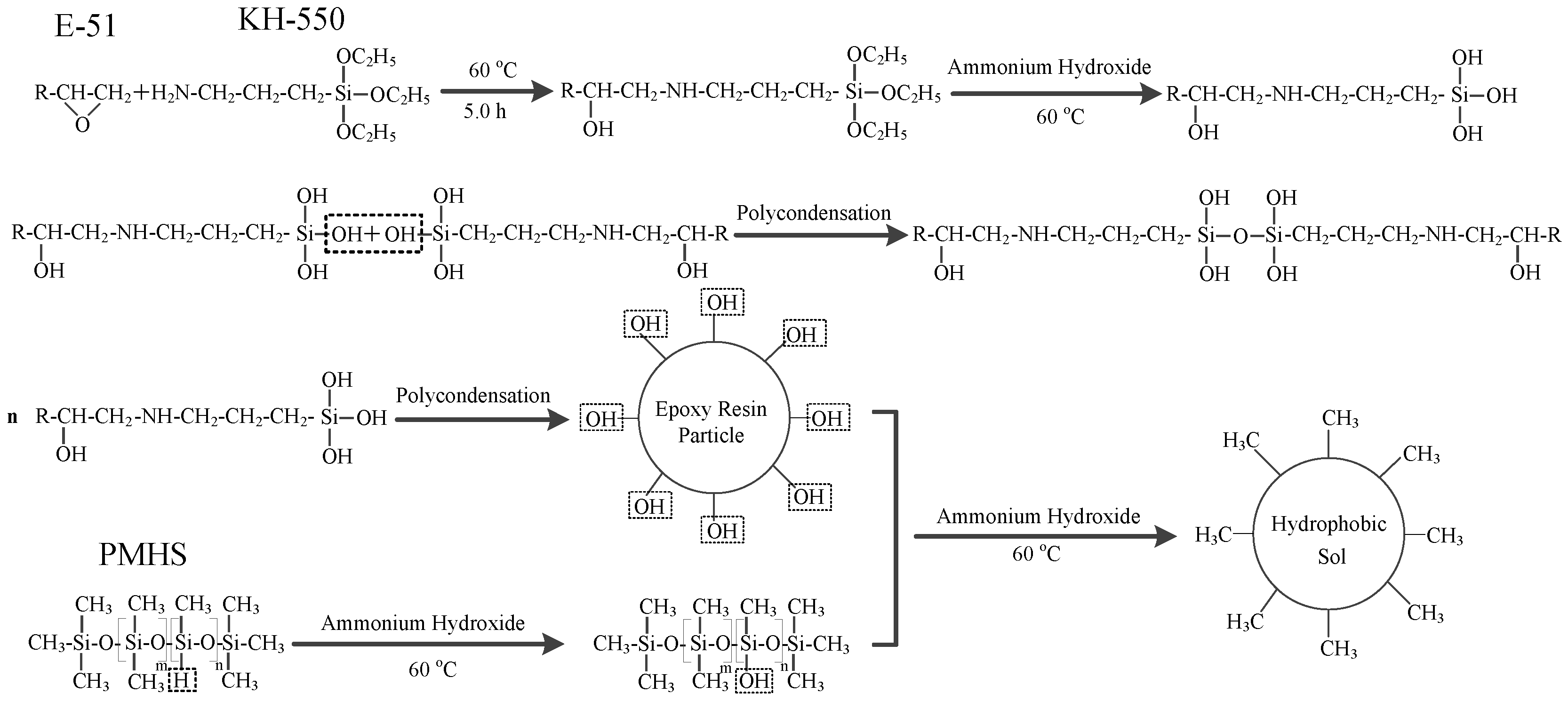
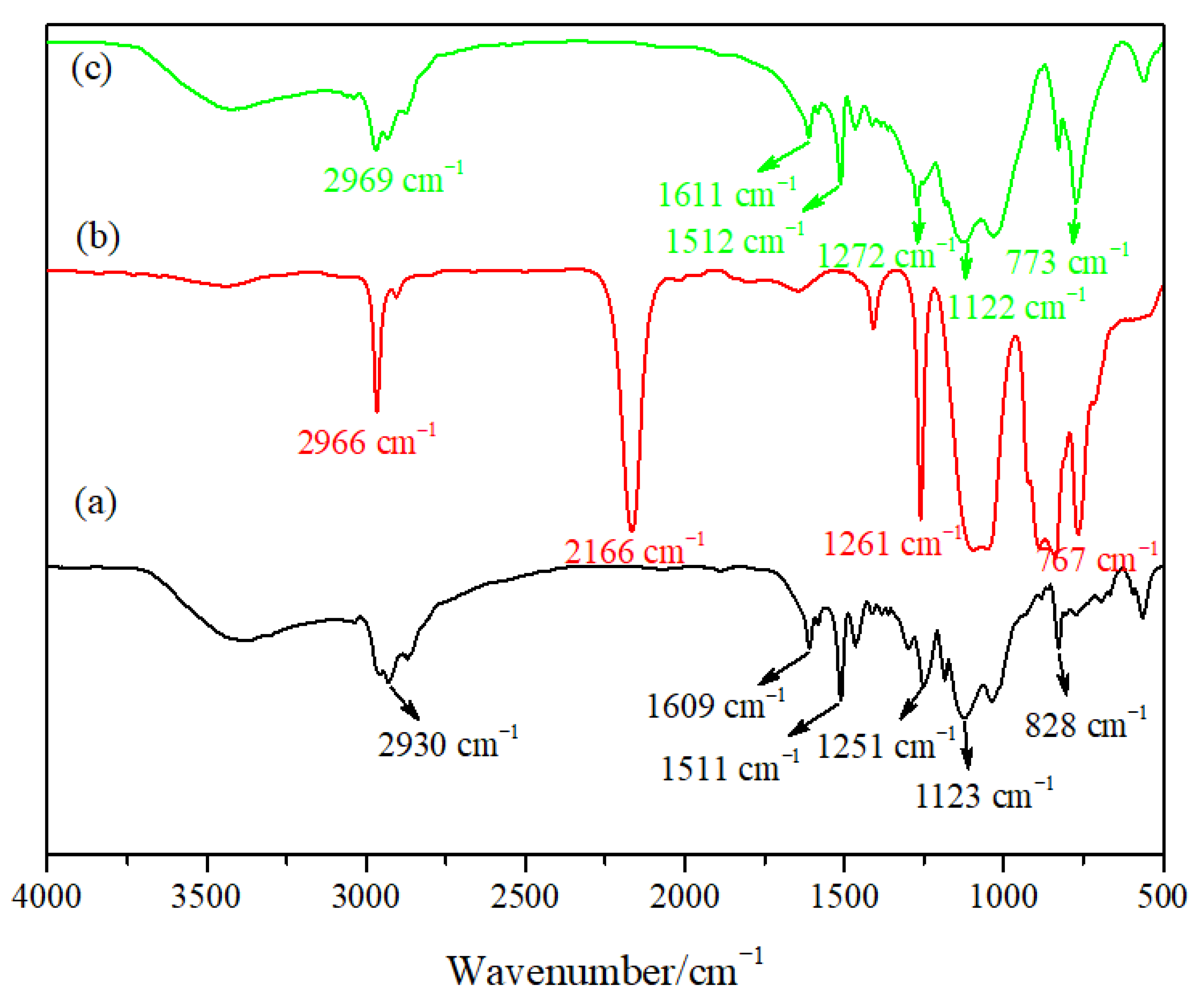

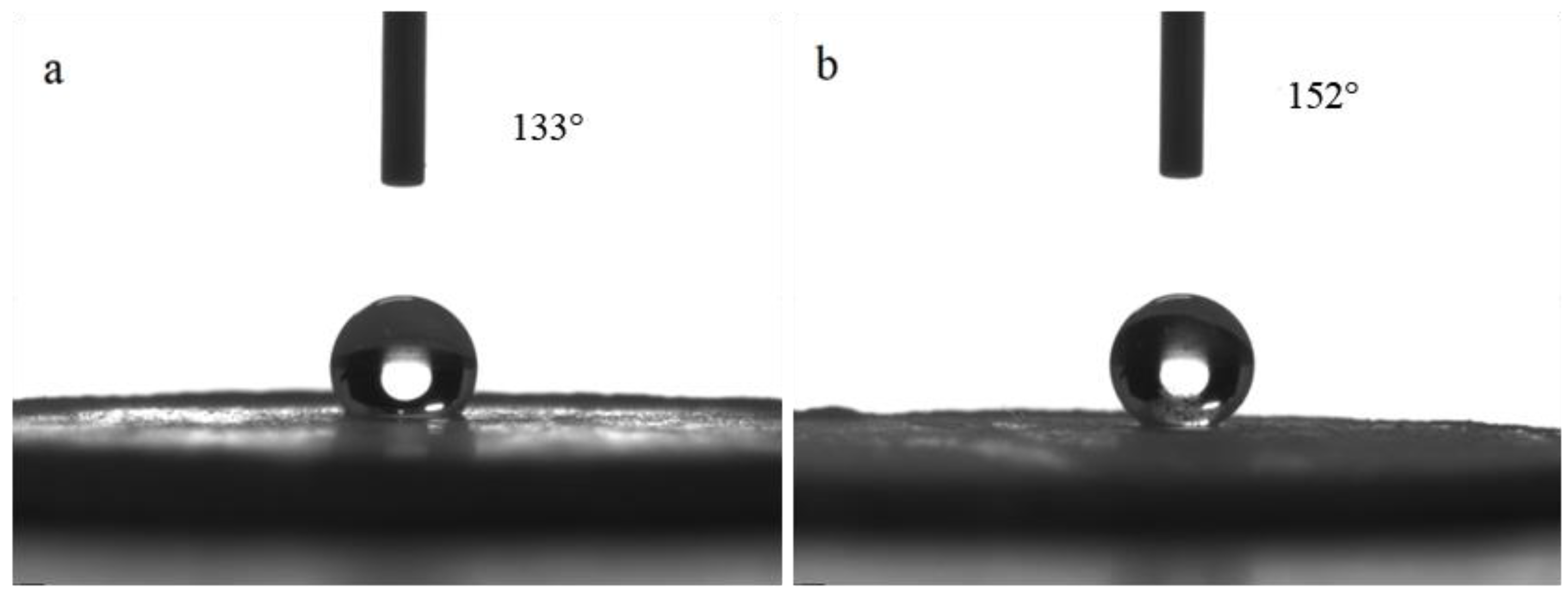

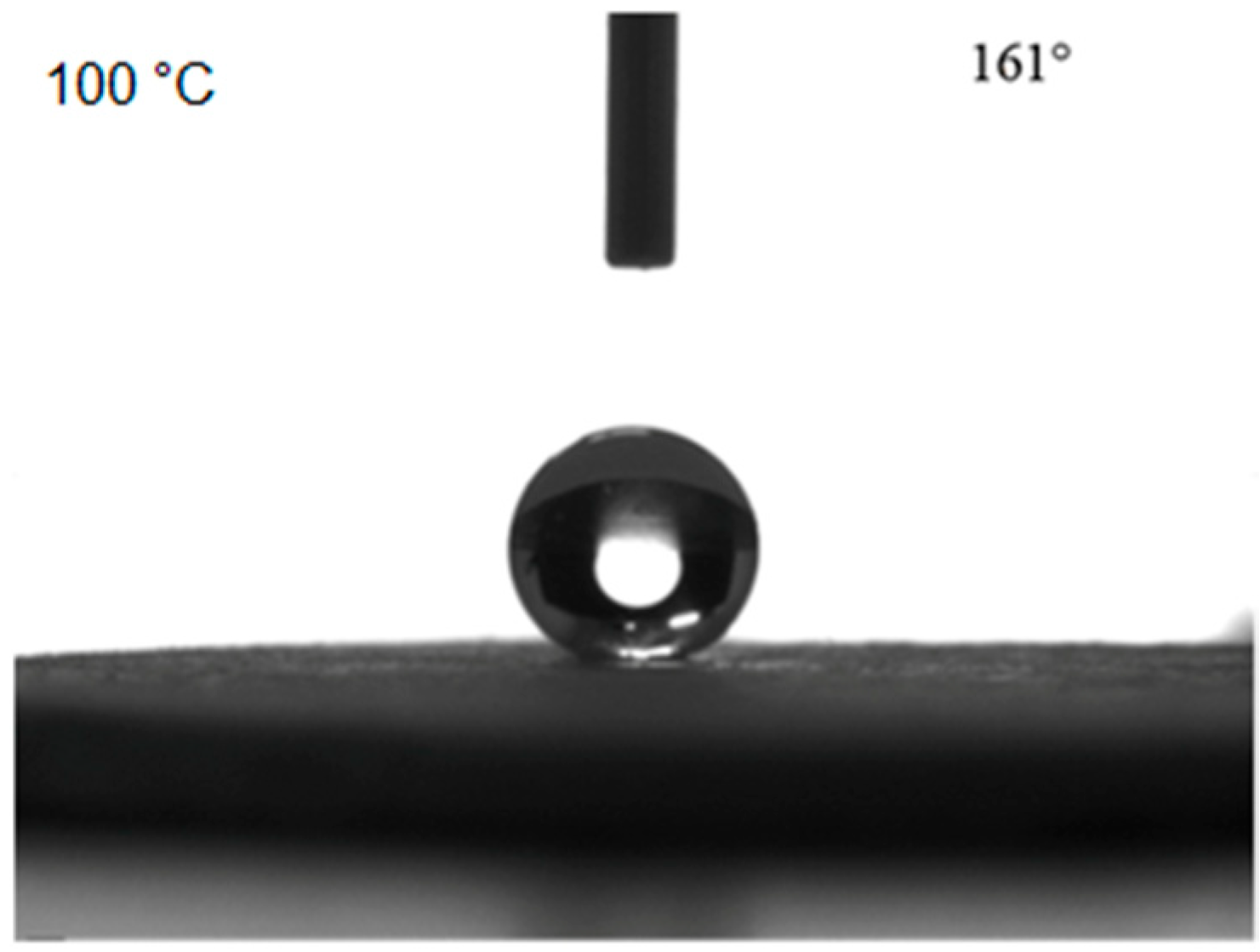

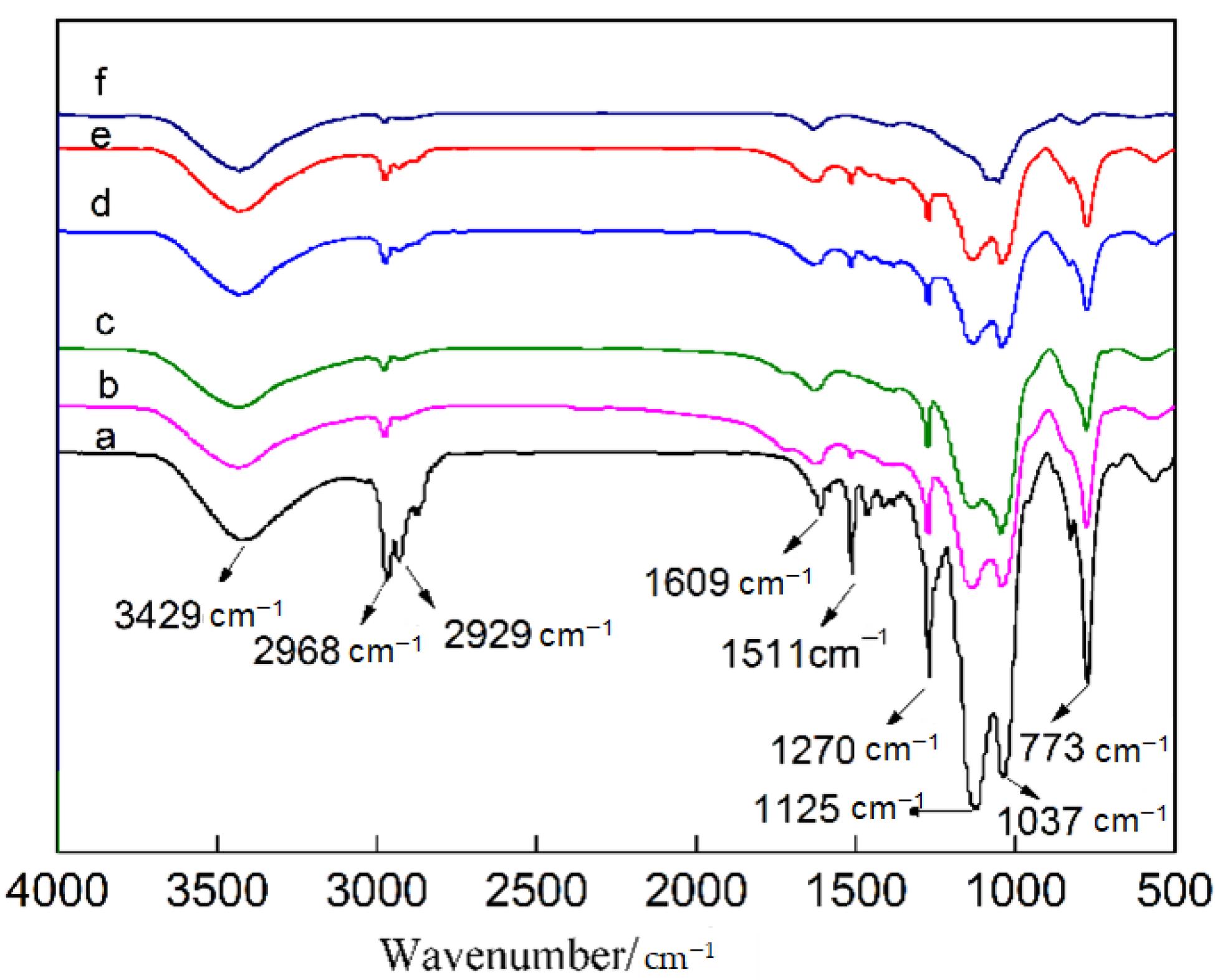
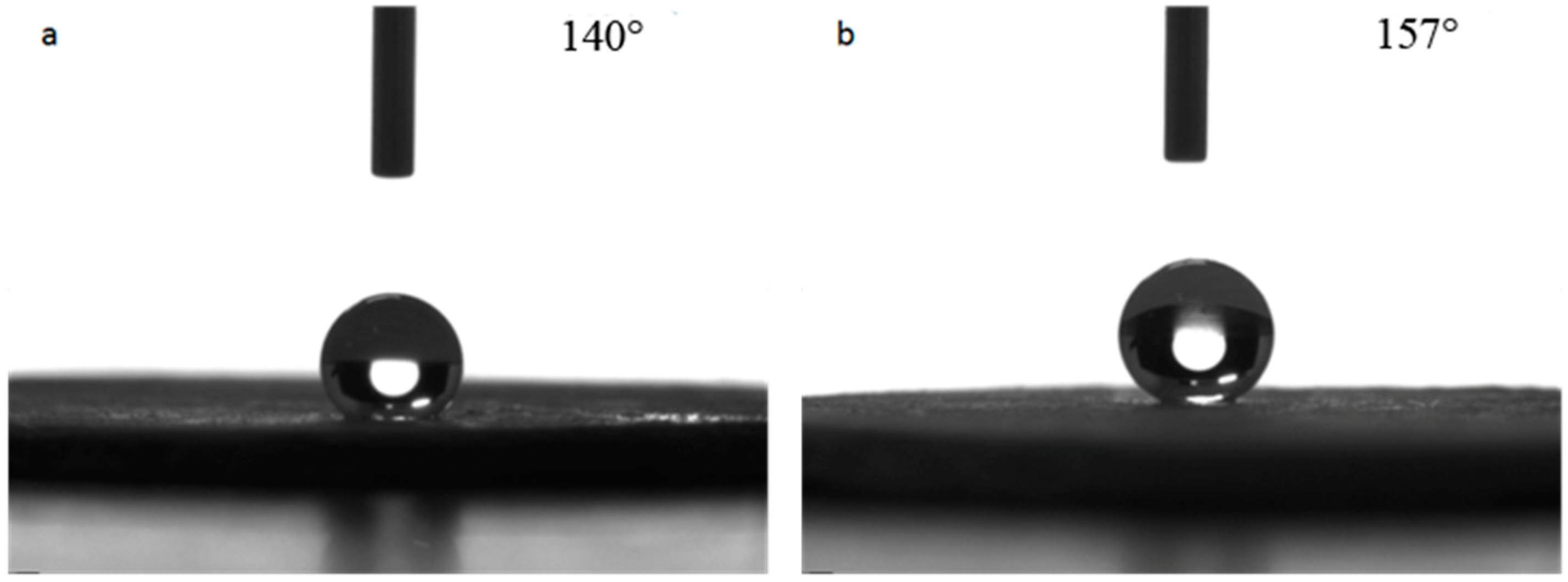
| Heat Treatment Temperature (°C) | 50 | 80 | 100 | 150 | 200 | 250 | 300 |
|---|---|---|---|---|---|---|---|
| Contact Angle (°) | 153 ± 2 | 158 ± 2 | 161 ± 2 | 156 ± 2 | 154 ± 2 | 153 ± 2 | 151 ± 2 |
| Rolling Angle (°) | 8 | 6 | 4 | 5 | 5 | 5 | 8 |
Publisher’s Note: MDPI stays neutral with regard to jurisdictional claims in published maps and institutional affiliations. |
© 2021 by the authors. Licensee MDPI, Basel, Switzerland. This article is an open access article distributed under the terms and conditions of the Creative Commons Attribution (CC BY) license (http://creativecommons.org/licenses/by/4.0/).
Share and Cite
Zheng, K.; Zhu, J.; Liu, H.; Zhang, X.; Wang, E. Study on the Superhydrophobic Properties of an Epoxy Resin-Hydrogenated Silicone Oil Bulk Material Prepared by Sol-Gel Methods. Materials 2021, 14, 988. https://doi.org/10.3390/ma14040988
Zheng K, Zhu J, Liu H, Zhang X, Wang E. Study on the Superhydrophobic Properties of an Epoxy Resin-Hydrogenated Silicone Oil Bulk Material Prepared by Sol-Gel Methods. Materials. 2021; 14(4):988. https://doi.org/10.3390/ma14040988
Chicago/Turabian StyleZheng, Kui, Jie Zhu, Haifeng Liu, Xingquan Zhang, and Enze Wang. 2021. "Study on the Superhydrophobic Properties of an Epoxy Resin-Hydrogenated Silicone Oil Bulk Material Prepared by Sol-Gel Methods" Materials 14, no. 4: 988. https://doi.org/10.3390/ma14040988
APA StyleZheng, K., Zhu, J., Liu, H., Zhang, X., & Wang, E. (2021). Study on the Superhydrophobic Properties of an Epoxy Resin-Hydrogenated Silicone Oil Bulk Material Prepared by Sol-Gel Methods. Materials, 14(4), 988. https://doi.org/10.3390/ma14040988






